Summer holidays 2006
In progress:
1. More photos coming up.
2. Annotations of photos.
3. Diary notes.
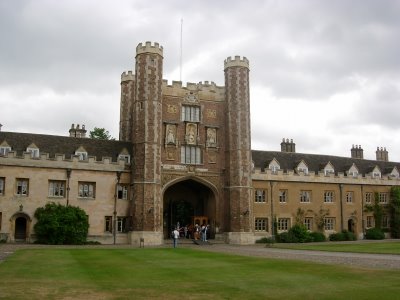
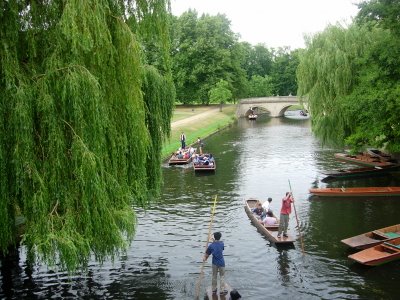
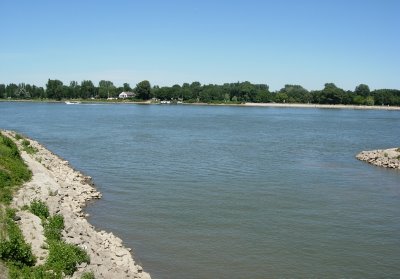
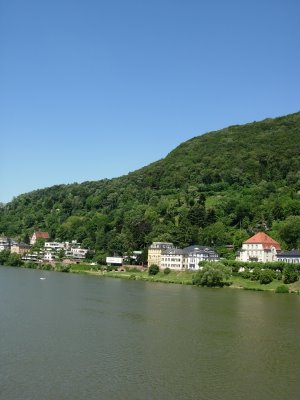
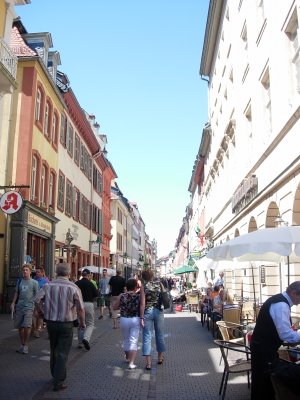
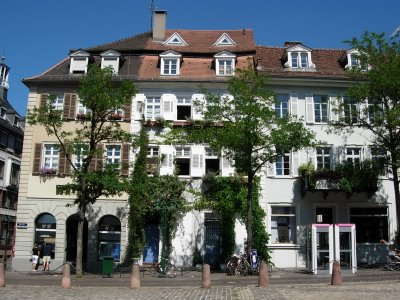
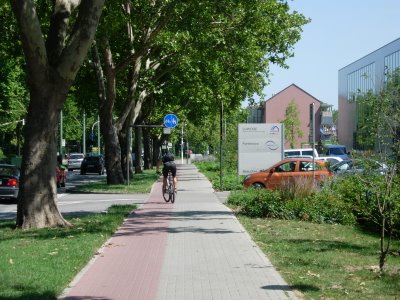
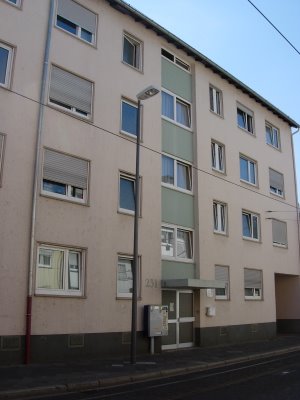

While my family is in Malaysia, I chose to do work experience in Germany...
But before that I went to London...
Draft:
1st Day
I am working in one of twelve departments, called "Performance Chemicals". I´ve been shown around building J550 (that´s where I will be working/learning the next two weeks), the safety, danger zones, the alarm plan (there´s a demonstration fire alarm event every friday here at BASF for safety reasons)...
The Master (the one who is responsible for lab equipment in each building) gave me everything I needed - labcoat, goggles, and shoes, which are made out of steel, hence very heavy, but keeps your feet away from dangerous chemicals.
Found my way round - the canteen, toilets etc. Got lost quite a few times...
Day 2
Plastics and pigments... interesting stuff. Different types of pigments used in plastics (organic, inorganic and dyes), diff. properties etc. Weather machines (also a station in Florida) to test light and thermal stability. Light stabilisers prevent the binding of C to O when C=C breaks under UVA. Different light stabilisers - small monomers can migrate to the surface - an advantage; long chains (between monomer and polymer about 1000 monomers) - require a lot of it as it does not migrate to surface, but less expensive)
Day 3
Lacquer, pH correction from 2 to 8 using DMEA (Di-methyl-ethanol-amine) (increases pot life and prevents rusting one metals), titration, pendulum hardness (glass hardess 180 swings 100%, laquer surfaces about 50 to 150 swings), hardness vs temperature, pot-life (reaction time, how long one can work with it) is about 1 hour.
Day 4
Pigments and dyestuffs used in pens usw. Must not have particles more than 5 micrometers as it will block the roller ball pen = cannot write, so look under microscope (a few particles is okay can centrifuge and filter). Made pens = most difficult is making the ink = dye (3%) in additive (97%) (water, glycol which prevents crystal formation etc.). Pressurised and high temp. coloured wood (made out of fibres so glue, dyes, water...), advantage is if you make a mark on the wood, the colour is still there.
Day 5
Pigments testing. A lot of testing. Pigments and binders mixed first by hand to ensure that powder in binder. Then in shaking machine which will make constant liquid. Roll out liquid, with machine and 300µm bridge on special card (thin laquer which is hydrophobic as the binder is water based/black and white to test for opaqcity). Rub test to see consistency of binder/pigment...
Day 6/7/8
Wood lacquers, binders, additives. Spray lacquers. UV-curing and mechanisms. Carbon dioxide, inert curing. Oxygen inhibition. Various tests: sand-drying, dust-drying, hardness.
Day 9
Laquers. Acid-curing, acid starts hardening reaction. Carbon film, dry testing.
Random notes:
1. Always safety first. Always treat chemicals as dangerous when possible. Labelled poisonous usually means cancerous. Talked about Bhopal incident which demonstrates safety last mentality. Even now, cheap labour in the third world country use very bad quality safety equipment even though scientists know they are working with dangerous chemicals = outrageous!
2. pH definition: the logarithm of the reciprocal of oxonium concentration in gram atoms per liter
3. Platinum and silver dispersed is black. ?
4. Black pigments that do not absorb heat. Iron oxide mixed with chromium compound. Reason: only absorbs heat at a specific peak, but normal black over a range of wavelengths in UV range.
5. BASF is the largest company in the world. Bayer second largest in Germany but not even close to BASF.
6. Most people here, especially those who meet customers, speak english, a little if not perfect.
7. Chromium yellow used in the olden days are poisonous. Used in telephone books, first in Switzerland. Telephonists or whatever they´re called lick their tongue to free the pages and hence get cancer. Now banned...
8. For more viscous substances, cut pipette to a wider hole.
9. Most of the time, lab technicians and production workers have the same pay; only difference is lab technician works only 7 hours, and prod. workers work 12 hours.
1. More photos coming up.
2. Annotations of photos.
3. Diary notes.
Entrance to Trinity College, Cambridge

Rowing in Cambridge

Mainz, Germany

River Rhein, Heidelberg, Germany

Heidelberg

House, Ludwigshafen, Germany

Walk to work at BASF, Ludwigshafen

Where I lived

Cultural festival, Ludwigshafen town centre

While my family is in Malaysia, I chose to do work experience in Germany...
But before that I went to London...
Draft:
1st Day
I am working in one of twelve departments, called "Performance Chemicals". I´ve been shown around building J550 (that´s where I will be working/learning the next two weeks), the safety, danger zones, the alarm plan (there´s a demonstration fire alarm event every friday here at BASF for safety reasons)...
The Master (the one who is responsible for lab equipment in each building) gave me everything I needed - labcoat, goggles, and shoes, which are made out of steel, hence very heavy, but keeps your feet away from dangerous chemicals.
Found my way round - the canteen, toilets etc. Got lost quite a few times...
Day 2
Plastics and pigments... interesting stuff. Different types of pigments used in plastics (organic, inorganic and dyes), diff. properties etc. Weather machines (also a station in Florida) to test light and thermal stability. Light stabilisers prevent the binding of C to O when C=C breaks under UVA. Different light stabilisers - small monomers can migrate to the surface - an advantage; long chains (between monomer and polymer about 1000 monomers) - require a lot of it as it does not migrate to surface, but less expensive)
Day 3
Lacquer, pH correction from 2 to 8 using DMEA (Di-methyl-ethanol-amine) (increases pot life and prevents rusting one metals), titration, pendulum hardness (glass hardess 180 swings 100%, laquer surfaces about 50 to 150 swings), hardness vs temperature, pot-life (reaction time, how long one can work with it) is about 1 hour.
Day 4
Pigments and dyestuffs used in pens usw. Must not have particles more than 5 micrometers as it will block the roller ball pen = cannot write, so look under microscope (a few particles is okay can centrifuge and filter). Made pens = most difficult is making the ink = dye (3%) in additive (97%) (water, glycol which prevents crystal formation etc.). Pressurised and high temp. coloured wood (made out of fibres so glue, dyes, water...), advantage is if you make a mark on the wood, the colour is still there.
Day 5
Pigments testing. A lot of testing. Pigments and binders mixed first by hand to ensure that powder in binder. Then in shaking machine which will make constant liquid. Roll out liquid, with machine and 300µm bridge on special card (thin laquer which is hydrophobic as the binder is water based/black and white to test for opaqcity). Rub test to see consistency of binder/pigment...
Day 6/7/8
Wood lacquers, binders, additives. Spray lacquers. UV-curing and mechanisms. Carbon dioxide, inert curing. Oxygen inhibition. Various tests: sand-drying, dust-drying, hardness.
Day 9
Laquers. Acid-curing, acid starts hardening reaction. Carbon film, dry testing.
Random notes:
1. Always safety first. Always treat chemicals as dangerous when possible. Labelled poisonous usually means cancerous. Talked about Bhopal incident which demonstrates safety last mentality. Even now, cheap labour in the third world country use very bad quality safety equipment even though scientists know they are working with dangerous chemicals = outrageous!
2. pH definition: the logarithm of the reciprocal of oxonium concentration in gram atoms per liter
3. Platinum and silver dispersed is black. ?
4. Black pigments that do not absorb heat. Iron oxide mixed with chromium compound. Reason: only absorbs heat at a specific peak, but normal black over a range of wavelengths in UV range.
5. BASF is the largest company in the world. Bayer second largest in Germany but not even close to BASF.
6. Most people here, especially those who meet customers, speak english, a little if not perfect.
7. Chromium yellow used in the olden days are poisonous. Used in telephone books, first in Switzerland. Telephonists or whatever they´re called lick their tongue to free the pages and hence get cancer. Now banned...
8. For more viscous substances, cut pipette to a wider hole.
9. Most of the time, lab technicians and production workers have the same pay; only difference is lab technician works only 7 hours, and prod. workers work 12 hours.
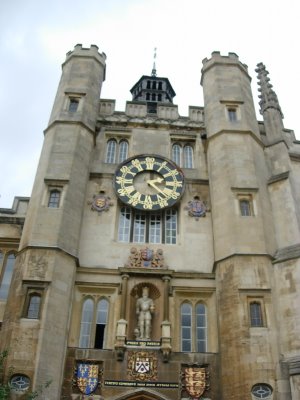
2 Comments:
wow, what a 'sau wok fung fu geh' trip. in addition, du kannst dein deutsch ueben. gonna upload some photos?
Just came back from germany!
eco11, uh yeah sure... I will upload some photos. But none of the photos are of my workplace because they don't allow cameras in the BASF areas.
Post a Comment
<< Home